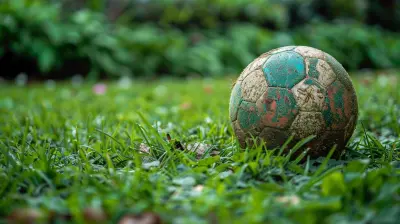The Influence of Muay Thai on Modern MMA Striking
18 June 2025
If you’ve watched a UFC fight recently and caught a fighter devastating their opponent with elbows in the clinch or chopping at their legs like a lumberjack on a caffeine bender, odds are you’ve witnessed the art of eight limbs in action—Muay Thai.
Now, Muay Thai isn’t some trendy new martial art that popped up last week. This striking art has been around for centuries in Thailand, smacking and kicking its way through history, and today? It’s become a foundational force in modern MMA.
So, how did this ancient striking style become one of the go-to disciplines for MMA fighters looking to sharpen their stand-up game? That’s exactly what we’re diving into. Grab your gloves, tighten those hand wraps, and let’s break this down.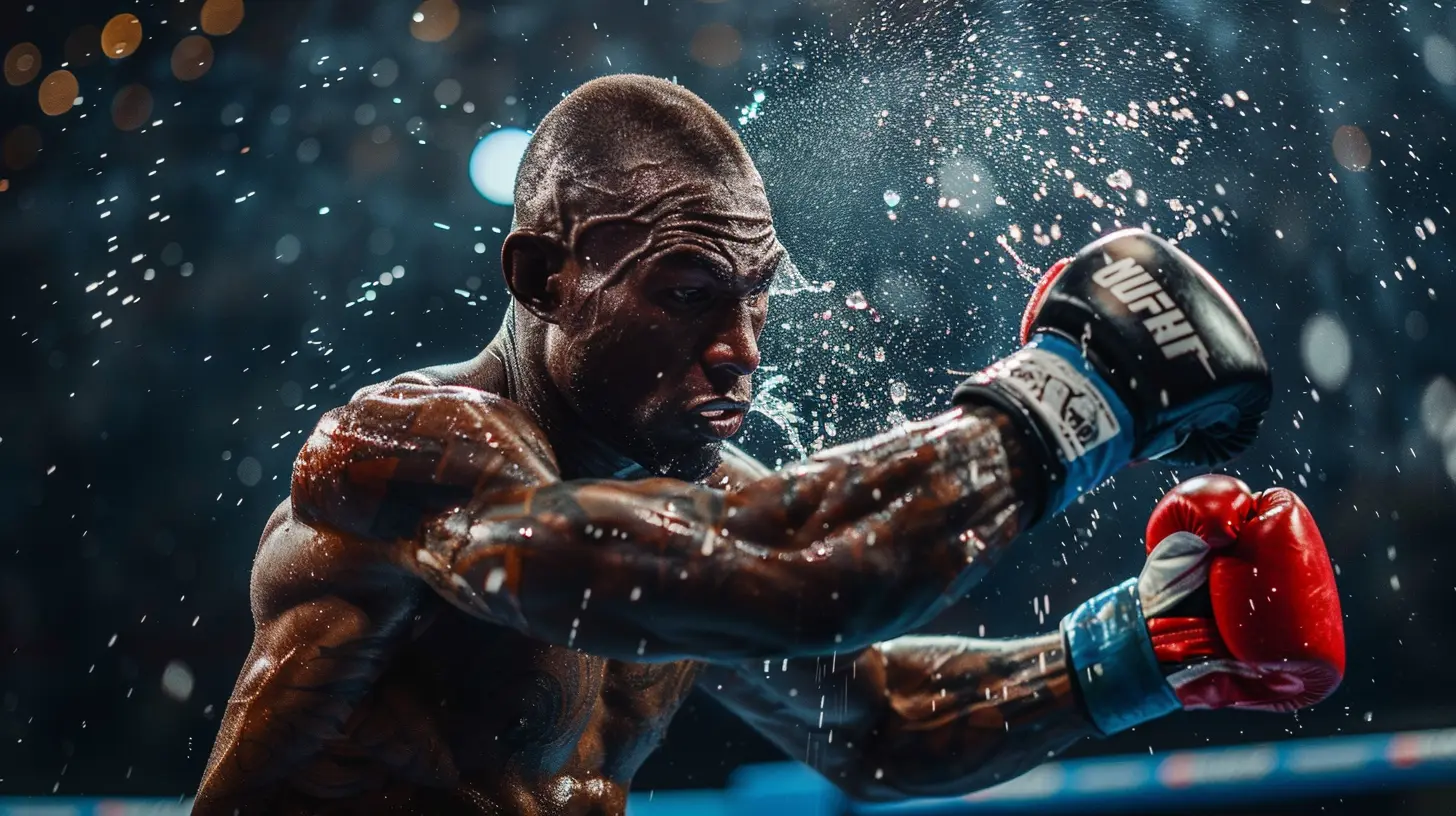
What Is Muay Thai, Anyway?
Before we go flying into spinning elbows and roundhouse kicks, let's pump the brakes and get the basics straight.Muay Thai, often called “The Art of Eight Limbs,” is a striking art that uses punches, kicks, elbows, and knees in a symphony of controlled violence. Add in clinch work—where fighters try to control each other while landing knees and elbows—and you’ve got one of the most complete striking systems on the planet.
Originating in Thailand, Muay Thai evolved not just as a sport but as a battlefield martial art. It wasn’t designed for points. It was designed to hurt. Efficient, brutal, and effective.
Now, contrast that with traditional boxing (which uses just fists) or kickboxing (which adds in kicks, but often limits clinch work and elbows), and you can clearly see why MMA fighters have flocked to Muay Thai like kids to a candy store.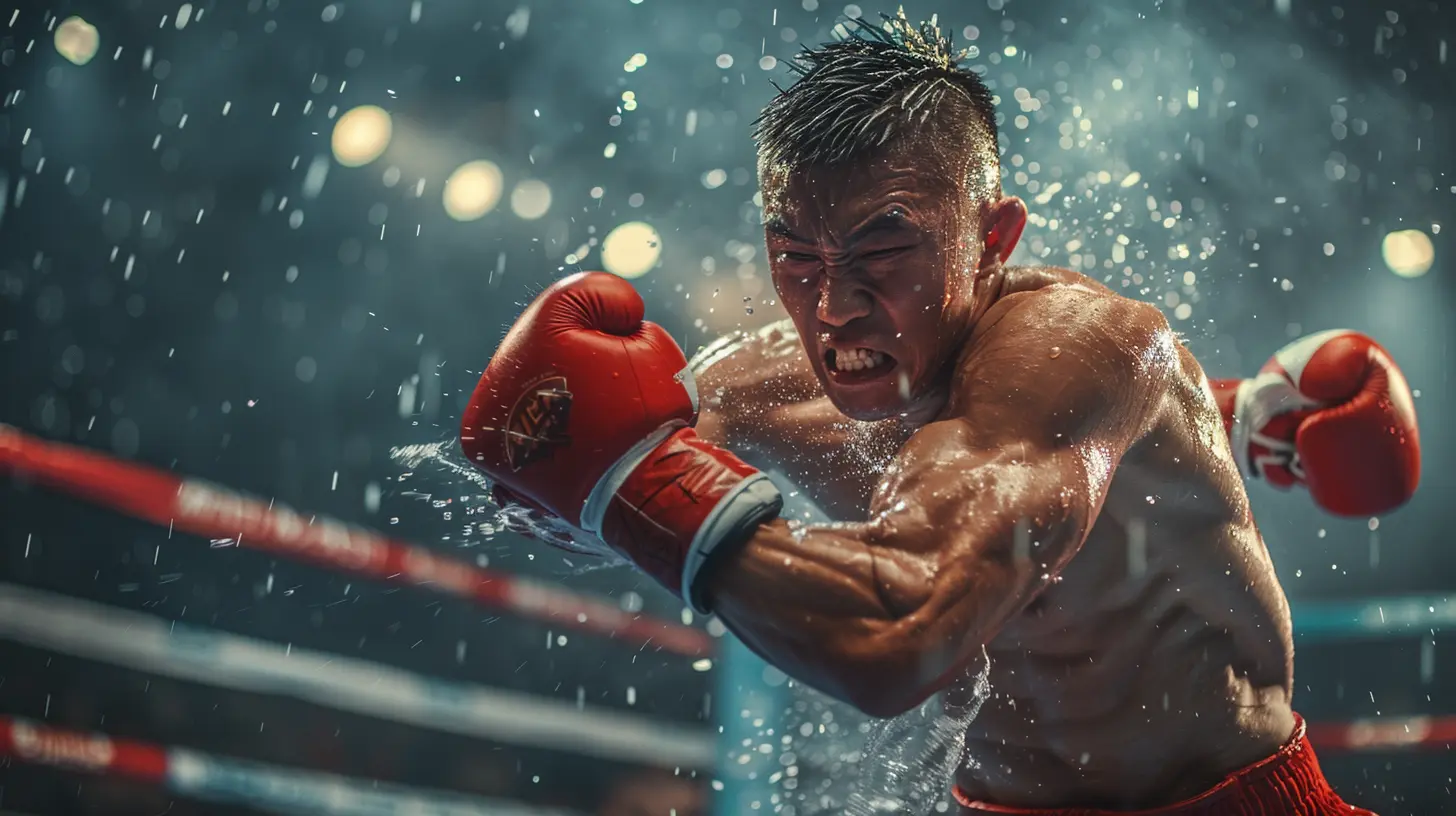
Why Muay Thai Meshed So Well with MMA
Let’s be honest. MMA is like the wild west of combat sports. It’s chaotic, it’s fast, and it’s unforgiving. So, fighters need tools that are versatile and can help them adapt on the fly. That’s where Muay Thai absolutely shines.1. The Art of Clinch Warfare
In MMA, the clinch is like no man's land. You're stuck in close... but that doesn’t mean you're safe.Muay Thai’s clinch game is a thing of tactical beauty. Fighters use it to control posture, land knees and elbows, and manipulate opponents. This is huge in MMA where takedowns and dirty boxing are ever-present dangers.
And let’s face it, watching someone eat five knees to the ribs in the clinch? That can be a fight-ender.
2. Elbows: The Razor-Blades of the Striking World
Elbows are short, sneaky, and built for slicing. They're not just about power — they’re about precision too.In MMA, you’ve got smaller gloves and a cage, which means getting into close range is common. Muay Thai elbow strikes — horizontal, diagonal, spinning — become devastating tools when fighters are up close and personal.
Just ask anyone who’s watched Jon Jones land a spinning back elbow. Brutal.
3. Leg Kicks and Calf Kicks – Death by a Thousand Cuts
Muay Thai fighters are well-known for their demolishing leg kicks. These bad boys aren’t just for scoring points—they’re used to slow opponents down, break rhythm, and basically ruin a fighter’s ability to shoot for takedowns or pivot for strikes.In modern MMA, these aren’t just add-ons. They’re often the opening move. A few well-placed calf kicks? Boom. You’ve changed the entire dynamic of the fight.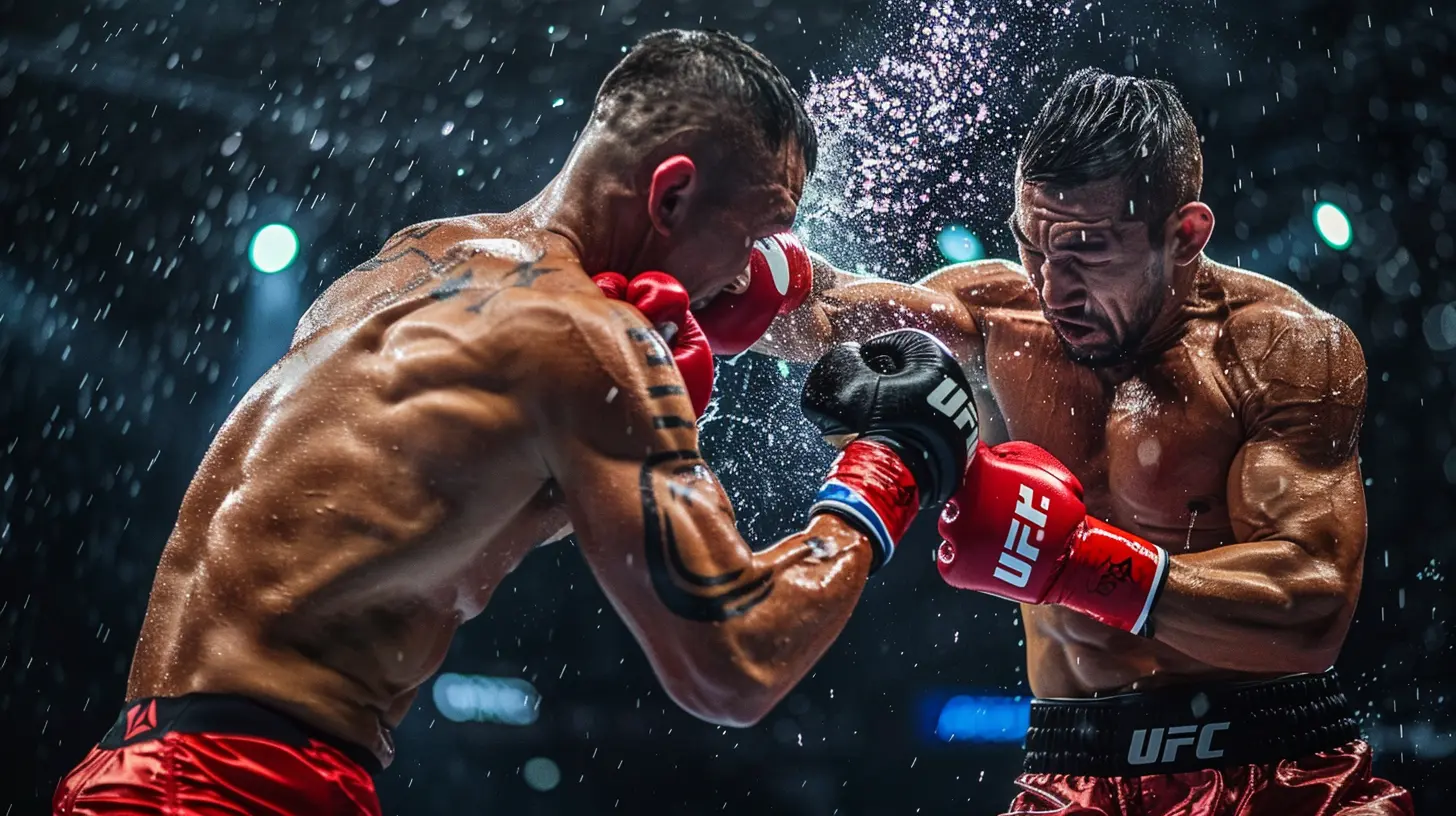
Iconic Fighters Who Brought Muay Thai to the MMA Octagon
Let’s talk about some legends who didn’t just use Muay Thai—they embodied it inside the Octagon. These warriors took the art of eight limbs and turned it into something that fits perfectly into the MMA blender.Anderson "The Spider" Silva
You can’t talk Muay Thai influence without tipping your hat to Anderson Silva. The guy was a Muay Thai magician. Whether it was those pinpoint knees, slick clinch control, or that infamous front kick KO on Vitor Belfort, Silva showed the MMA world just how elegant and lethal Muay Thai could be.His fight IQ? Off the charts. His Muay Thai technique? Chef’s kiss.
Joanna Jędrzejczyk
Joanna Champion brought high-level Muay Thai to the women’s division. Her pace, volume, and precision striking were straight from the Muay Thai playbook. She dismantled opponents with blistering combinations and knees in the clinch that would make a grown man cry.She didn’t just fight — she performed a striking clinic every time she stepped into the cage.
José Aldo
Although Aldo is also a high-level Brazilian jiu-jitsu black belt, we mostly remember him for those leg kicks. Yep, textbook Muay Thai. He’d chop down his opponents’ lead legs like a woodcutter with a vendetta.Aldo was a prime example of how Muay Thai roots could transform a fighter into a technical and terrifying striker in the MMA world.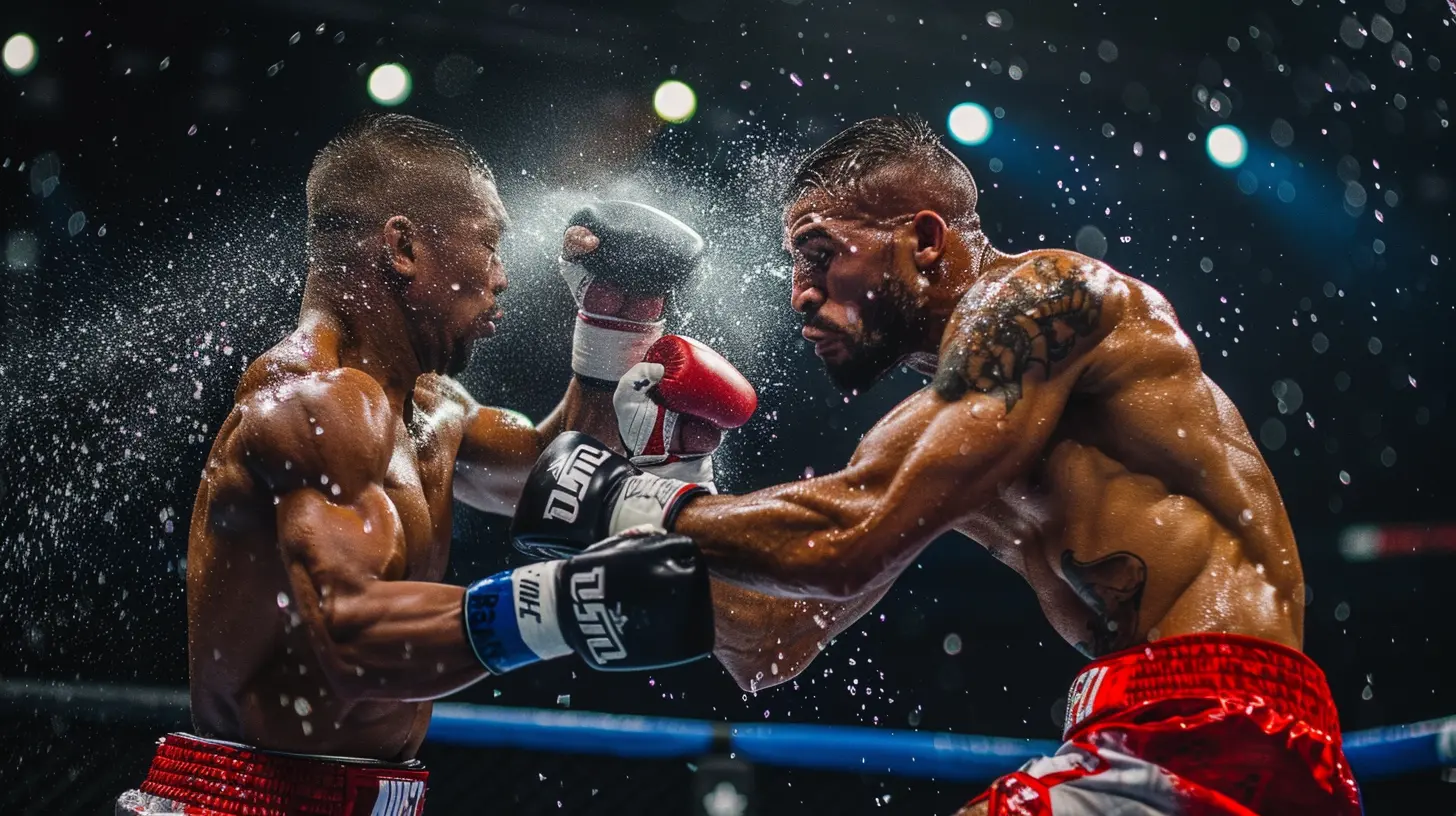
Modern-Day Muay Thai Hybrids
We’re now in the era of hybrid fighters—guys and gals who blend Muay Thai with boxing, wrestling, jiu-jitsu, and even karate. But the Muay Thai influence? Still crystal clear.Strikers today steal from the Muay Thai playbook more than ever: using leg kicks as range-finders, elbows in scrambles, and the clinch to stall or punish. We're not just seeing Muay Thai in MMA—we’re seeing MMA evolve because of Muay Thai.
Take Israel Adesanya. Not a pure Muay Thai guy, but you better believe his striking IQ and shot selection scream Thai-style efficiency.
Even Dustin Poirier—a Louisiana brawler at heart—has adopted beautiful Muay Thai elements into his game. From tight elbow counters to pulping leg kicks, it's clear as day.
The Muay Thai Toolbox: What Striking Weapons Have Carried Over?
Okay, time for some nitty-gritty. Let’s break down what specific Muay Thai tools are now staples in MMA striking arsenals.| Muay Thai Technique | MMA Application |
|---------------------------|--------------------------------------------------------|
| Roundhouse Kick | Chops at legs, body or head — used to break rhythm |
| Elbows | Short-range weapons, perfect for tight exchanges |
| Clinch Knees | Torment in the clinch – body and head targets |
| Teep (Front Kick) | Used to measure distance and push opponents back |
| Sweeps & Dumps | Defensive options when grabbed or off-balanced |
| Checking Leg Kicks | Key to defending against modern calf kick onslaught |
Every single one of these is now part of the common MMA toolkit.
The Toughness Factor – Built Different in Thai Gyms
There’s something special about how Muay Thai is trained in Thailand. Thai fighters often start young. They fight often. And they’re tough as nails. You can’t teach that level of durability and mental grit overnight.A lot of MMA fighters go to Thailand not just to polish their technique, but to soak in the grit. The early morning runs, pad work that feels like a cardio murder-suicide, and hundreds of sparring rounds. It’s a rite of passage.
Ever wonder why some of these guys look composed while getting battered? Thank Muay Thai camps.
What Can MMA Learn Next from Muay Thai?
Muay Thai's influence is still growing in MMA. But there’s room to learn more.For example:
- Defensive Muay Thai: The art isn’t just offense. Subtle blocks, parries, and head movement are often underutilized in MMA.
- Teep Control: The teep (push kick) can be a jab with the foot. It controls distance, messes with rhythm, and sets up harder shots. Underused, but super effective.
- Rhythm Control: Thai fighters are masters of changing pace and reading opponents. That’s pure gold in MMA striking.
As MMA evolves, we’ll likely see more refined Muay Thai integrations—less brawling, more surgical.
Final Thoughts: Muay Thai Isn’t Just Useful — It’s Essential
Let’s call it like it is — Muay Thai isn’t just in MMA anymore. It’s everywhere. It’s in the leg kicks that make fighters switch stances. It’s in the elbows that split foreheads. It’s in the clinch battles against the cage. It’s woven into the very DNA of modern MMA striking.So, whether you're a fighter, a fan, or someone who just loves watching people get respectfully punched in the face, understanding Muay Thai’s impact gives a deeper appreciation of this beautiful, brutal sport.
Muay Thai didn’t just sneak into MMA—it kicked the door down and made itself at home.
all images in this post were generated using AI tools
Category:
MmaAuthor:

Everett Davis
Discussion
rate this article
2 comments
Zayden McCloud
Muay Thai isn’t just an influence; it’s the backbone of modern MMA striking. Without those elbows and knees, fighters would still be playing patty-cake!
October 31, 2025 at 1:37 PM

Everett Davis
Thank you for your insight! Muay Thai's unique techniques, such as elbows and knees, indeed provide a crucial foundation for effective striking in modern MMA.
Kairoth White
Muay Thai has significantly shaped modern MMA striking, blending its powerful kicks, clinch work, and elbows into fighters' arsenals. This integration enhances overall striking versatility, making it crucial for success in today’s competitive MMA landscape.
June 23, 2025 at 3:20 AM

Everett Davis
Thank you for your insightful comment! Indeed, Muay Thai's unique techniques have greatly enriched MMA striking, contributing to the evolution of fighters' skill sets and strategies.


